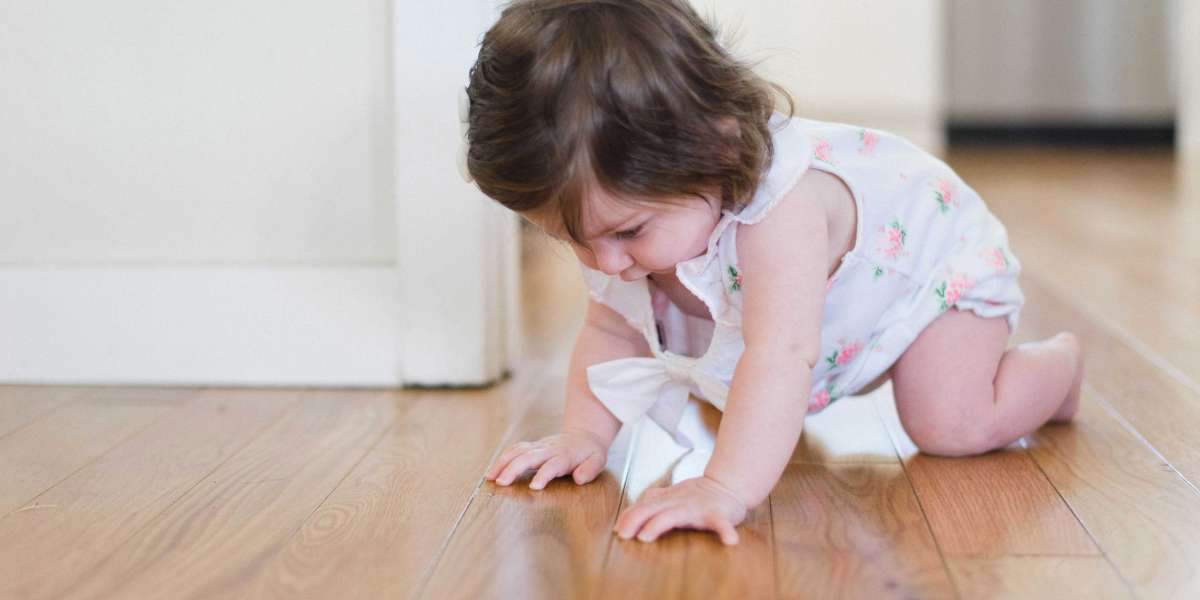Hardwood floors have a way of making a house feel warm and inviting. But over time, they take a beating—scratches, fading, and that dull, lifeless look that makes you wonder if your floors have just given up. If that sounds familiar, it might be time for hardwood floor refinishing.
Refinishing hardwood floors isn’t just about aesthetics; it’s about preserving the integrity of your floors, extending their lifespan, and even boosting your home’s value. But before you dive in with a sander and a bucket of stain, there are a few things you need to know. Let’s walk through the process step by step, so you know exactly what to expect.
How Do You Know It’s Time to Refinish?
Not all floors cry out for refinishing at the same time. Some show their age with deep scratches and water stains, while others just lose their shine. A quick test? Drip a few drops of water on your floor. If the water beads up, you’re good for a while. If it soaks in almost immediately, your floor’s protective finish is gone—time to refinish.
Another red flag? If you can see raw wood peeking through in high-traffic areas, that’s a sign the topcoat has worn down. And if your floor looks uneven or has grayish patches (caused by oxidizing wood), refinishing is overdue.
What Does the Process Involve?
Alright, so you’ve decided to go for it. Here’s what refinishing hardwood floors actually entails:
1. Sanding: The Messy (But Necessary) Part
First things first—sanding. This step removes the old finish, scratches, and imperfections, giving you a fresh surface to work with. Depending on the condition of your floor, you may need multiple rounds of sanding with different grit levels. If the scratches are shallow, a light sanding might do the trick, but if your floors look like they’ve been through a war, a full sanding is required.
Pro tip: If you’ve got engineered hardwood, check how thick the top veneer is. Too thin? Sanding might not be an option, and you’ll have to consider alternatives like buffing or replacing damaged boards.
2. Choosing the Right Finish
Once you’ve got a clean slate, it’s time to pick a finish. This is where things get fun (or overwhelming, depending on how many decisions you’ve already made that day). You’ve got options:
- Oil-based polyurethane: Classic choice. Long-lasting, rich in color, but takes longer to dry.
- Water-based polyurethane: Dries faster, low odor, but might not have the same depth of color.
- Hard-wax oil: More natural look, lower sheen, but requires more maintenance over time.
The right choice depends on your lifestyle. Got pets and kids running around? A tougher finish like oil-based poly might be your best bet. Prefer a more natural, matte look? Hard-wax oil is calling your name.
3. Staining: To Stain or Not to Stain?
You can go with the natural color of your wood or add a stain to enhance or change its look. Lighter stains make a space feel open and airy, while darker stains give off a cozy, elegant vibe. But keep in mind, not all wood species take stain the same way, so test a patch before committing to a full application.
4. Applying the Finish
Once the stain (if used) is dry, the finish is applied in multiple coats. This is what gives your floors their durability and protection. Each coat needs time to dry, and light sanding in between coats helps ensure a smooth, professional look.
How Much Does Hardwood Floor Refinishing Cost?
Ah, the question everyone wants answered—what’s this going to cost? Hardwood floor refinishing prices vary based on several factors, including the size of your space, the condition of the floors, and the type of finish you choose.
On average, you’re looking at anywhere from $3 to $8 per square foot. If you’re hiring a professional for the job, a standard 1,000-square-foot space might set you back between $3,000 and $8,000. Want to DIY? You can cut costs significantly, but be prepared for some serious labor and the rental fees for a drum sander, which can cost around $50 to $100 per day.
Is DIY Hardwood Floor Refinishing a Good Idea?
You might be wondering, “Can I just do this myself?” The answer? Maybe. If you’re handy and have patience (and a high tolerance for dust), then sure, go for it. Renting a sander and doing the labor yourself can save a significant amount of money.
That said, refinishing hardwood floors is not a weekend warrior project if you don’t know what you’re doing. One wrong move with the sander, and you could create dips or uneven patches that will drive you nuts forever. If you’re unsure, hiring a professional might be worth the extra cost for peace of mind.
How Long Will It Take?
Time-wise, expect the entire process to take about 3 to 5 days, depending on drying times and how many coats of finish you apply. Water-based finishes dry faster, while oil-based ones take longer. And here’s a heads-up: You’ll need to stay off your floors for at least 24 hours after the final coat (longer if you choose an oil-based finish).
How to Keep Your Floors Looking Good for Years
Once your floors are looking brand new again, you’ll want to keep them that way. Here’s how:
- Use furniture pads to prevent scratches.
- Sweep and vacuum regularly to avoid dirt buildup that can wear down the finish.
- Avoid excessive moisture, which can cause warping.
- Reapply a fresh topcoat every few years to extend the life of your refinishing job.
Final Thoughts
Hardwood floor refinishing isn’t just about making your floors pretty—it’s about bringing them back to life. Whether you tackle the job yourself or call in the pros, the result is worth it. A fresh refinish can completely transform a space, making it feel clean, polished, and full of character once again. So, if your floors are looking a little sad, maybe it’s time to give them the attention they deserve. After all, they’ve been holding you up all these years—literally.
For more information visit: Matte, Satin, or Gloss? Choosing the Right Finish for Hardwood Floor Refinishing | Robar Flooring








